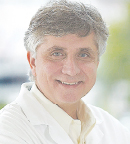In the 20-plus years I have spent in hematologic oncology, I have been fortunate to have a ringside seat to watch “game-changing” advances come into our field—all-trans retinoic acid for acute promyelocytic leukemia, tyrosine kinase inhibitors starting with imatinib for chronic myeloid leukemia, therapeutic monoclonal antibodies starting with rituximab in B-cell lymphomas, and so on. As far as I can recall, chimeric antigen receptor (CAR) T-cell technology is the singular advance in our field that has caught the imagination of patients, doctors, investors, and the public alike.

As far as I can recall, CAR T-cell technology is the singular advance in our field that has caught the imagination of patients, doctors, investors, and the public alike.— Parameswaran Hari, MD, MRCP
Tweet this quote
Within the past few years, we have gone from press reports and early-phase trials to two approved agents (axicabtagene ciloleucel and tisagenlecleucel) and a number of pharmaceutical companies and institutions across the globe participating in CAR T-cell research. As reviewed in this issue of The ASCO Post, Schuster et al1 have reported the results of their international pivotal phase II trial (JULIET) of CD19-directed CAR T cells (tisagenlecleucel) in relapsed or refractory diffuse large B-cell lymphoma (DLBCL), which led to the approval of this agent by the U.S. Food and Drug Administration (FDA).
JULIET Trial Findings
The JULIET study enrolled patients with relapsed or refractory DLBCL after autologous hematopoietic stem cell transplant (HSCT) or considered ineligible for autologous HSCT. The primary outcome reported was a 52% overall response rate, including 40% achieving a complete remission at 3 months among the 93 patients (of a total of 165 enrolled patients) who received CAR T-cell infusion. Most of the responses were durable, with a 65% relapse-free survival at 12 months among responders. Serious CAR T-cell specific adverse events such as cytokine release and neurologic events were reported in 22% and 12% of patients, respectively, with no treatment-attributed mortality.
Responses were established rapidly (within 3 months), and approximately half of the partial responders upgraded their responses to complete remission, consistent with the “living cell” nature of this therapy. These data point to an effective, relatively safe, highly targeted cell therapy option for those with relapsed or refractory DLBCL.
Several Questions Remain
On the other hand, this study and its supplemental data generate several questions about the place of tisagenlecleucel in clinical practice. Although this is a therapy with the potential to achieve long-lasting complete remissions, it has never been formally compared head-to-head with any of the current standards of care. Additionally, CAR T cells are specialized, expensive treatments not generally available outside of tertiary medical centers.
In the JULIET trial, one-third of the 238 screened patients failed to be enrolled, and more than half of the 238 failed to receive the intended therapy. Unlike most other clinical trials, the “enrolled” population here was not composed of patients who signed consent or started study-specific procedures—it was defined as those who had a leukapheresis product delivered to the manufacturing facility. This was a very liberal definition, excluding patients who in the screening phase may have attempted apheresis or experienced disease progression while waiting for apheresis.
The reported outcomes are from a highly select cohort of 93 patients who received CAR T cells manufactured in the United States. In fact, noninfused patients had a poorer performance status and were more likely to have refractory disease coming into the trial. Analyzed on an intention-to-treat basis, limited to the 165 enrolled patients, the response rate drops to a more modest 34%, and the median overall survival drops to 8.2 months (as opposed to 12 months in the treated population). Outcomes for the screened overall cohort of 238 patients or the 121 patients who did not receive therapy are not reported.
Cautious Evaluation of Trial Results
Outcomes for this and other CAR T-cell trials need to be analyzed, taking into account the selective reporting that emphasizes results in the treated cohorts and among responders. The treated cohort represents a minority among the patients who considered this treatment and started the first phase of the study (n = 238)—a subset of whom even underwent successful leukapheresis (n = 165). Who are the missing 121 patients who did not receive the treatment?
These patients likely represent those with the most aggressive subset of DLBCL who did not survive long enough to generate adequate CAR T-cell doses or came off study for reasons mostly related to disease progression. Excluding these patients from analysis almost automatically ensures superior results compared with the real population of interest—ie, “all” patients with relapsed or refractory DLBCL. The responders to treatment, whose excellent relapse-free and progression-free survival are emphasized in the abstract and figures (Figure 3 in the Schuster et al article), thus comprise less than one-third of the true intent-to-treat population. Reporting and analyzing survival by response (eg, in Figure 3D in the study article) make survival outcomes appear far superior than they actually are, since patients surviving to response assessment cannot by definition experience early mortality—the so-called immortality bias.
Although this is a therapy with the potential to achieve long-lasting complete remissions, it has never been formally compared head-to-head with any of the current standards of care.— Parameswaran Hari, MD, MRCP
Tweet this quote
To assess the true clinical value of tisagenlecleucel therapy, it is necessary to ignore the results for the select minority who received the infusions and the even smaller minority that responded and to think of the wider world of relapsed or refractory DLBCL. In practice, clinicians have to account for patients who may not survive the time to apheresis or CAR T-cell infusion (a median of 54 days), and the promise of CAR T cells should be weighed against immediately available alternative salvage chemotherapy choices. The lack of a concurrent control group makes this a difficult endeavor.
The authors chose the retrospective SCHOLAR-1 study as a historical comparator (where the median overall survival was 6.2 months). Unfortunately, the right comparison between the 238 patients that started the first phase (screening) vs patients in SCHOLAR-1 is not reported. Costa et al2 benchmarked the outcomes of patients from 15 U.S. academic centers with either primary disease progression while on upfront chemoimmunotherapy, residual disease at the end of upfront therapy, or relapse up to 6 months from the end of therapy. Their analysis as well as another retrospective analysis3 indicate that a subset of high-risk relapsed or refractory patients still have chemotherapy-sensitive disease and a minority up to 27% are cured with conventional, off-the-shelf salvage therapy and autologous HSCT.
Real-World Practice Implications
The JULIET study is extremely valuable in that it led to FDA approval and elegantly proved that tisagenlecleucel can produce sustained complete remissions. However, at this time, patients and clinicians should use these data to weigh CAR T-cell therapy against alternative off-the-shelf treatment choices. The promise of CAR T cells and the fear of missing out on a miracle drug should be tempered against the fact that even in a clinical trial setting, only a minority received the intended therapy. In the real world of insurance approvals, prior authorizations, travel to tertiary centers, limited apheresis slots, manufacturing delays/failures, an even larger proportion of patients might lose valuable time and thereby the opportunity for alternative therapy while waiting for the miracle of CAR T cells.
Currently ongoing randomized studies (ClinicalTrials.gov identifiers NCT03391466, NCT03570892) testing standard-of-care salvage options vs CD19-directed CAR T cells will hopefully provide the essential evidence and determine the rightful place in our armamentarium for this exciting modality. Until those data emerge, my approach as a transplanter will be to offer immediately available, time-tested salvage therapy followed by autologous HSCT for eligible patients, reserving CAR T cells for those failing to respond to that approach or predicted not to benefit (eg, those with proven chemotherapy-refractory disease). The current high prices, insurance barriers, limited centers, and production challenges are problems, but the large number of companies, institutions, and innovators in the CAR T-cell field fill me with hope that these challenges will soon be overcome. ■
Dr. Hari is Armand J. Quick/William F. Stapp Professor of Hematology and Chief of the Division of Hematology Oncology at the Medical College of Wisconsin, Milwaukee.
DISCLOSURE: Dr. Hari has received honoraria from Celgene, Millennium, Sanofi, Amgen, Novartis, and Spectrum Pharmaceuticals; institutional research funding from Millennium, Celgene, Onyx, and Spectrum Pharmaceuticals; and is a consultant/advisor for Amgen, Bristol-Myers Squibb, Juno, Janssen, Celgene, Sanofi, Spectrum Pharmaceuticals, and Takeda.
REFERENCES
1. Schuster SJ, Bishop MR, Tam CS, et al: Tisagenlecleucel in adult relapsed or refractory diffuse large B-cell lymphoma. N Engl J Med 380:45-56, 2019.
2. Costa LJ, Maddocks K, Epperla N, et al: Diffuse large B-cell lymphoma with primary treatment failure: Ultra-high risk features and benchmarking for experimental therapies. Am J Hematol 92:161-170, 2017.
3. Hamadani M, Hari PN, Zhang Y, et al: Early failure of frontline rituximab-containing chemo-immunotherapy in diffuse large B cell lymphoma does not predict futility of autologous hematopoietic cell transplantation. Biol Blood Marrow Transplant 20:1729-1736, 2014.


